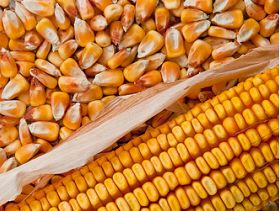 14 maize crop is well advanced. Preliminary estimates point to a production of 25 million tonnes, better than earlier expected due to a recovery in precipitation in late January/early February, which prevented significant yield reductions.
14 maize crop is well advanced. Preliminary estimates point to a production of 25 million tonnes, better than earlier expected due to a recovery in precipitation in late January/early February, which prevented significant yield reductions.At the estimated level, the 2014 maize output is well below last year’s bumper crop, but significantly above the five-year average.
Favourable prospects for planting of the 2014 wheat crop
Planting of the 2014 is scheduled from June. Farmers’ planting intentions indicate an increase in area planted from last year’s level to close to 4 million hectares, mainly in response to high domestic wheat prices. However, at the expected level the area planted is still below historical levels, due to wheat export restrictions -- that will remain in place for a second year in a row -- aiming to increase national stocks.
Assuming normal weather conditions during the cropping season, initial forecasts point to a wheat production of close to 11 million tonnes, 14 percent higher than last year’s reduced level but still below the five-year average.
Wheat production for 2013, harvested last January, was estimated at 9.2 million tonnes or 12 percent higher than the poor crop of 2012. However, this level of production is still well below the average of the past five years as frosts and reduced rainfall significantly reduced yields early in the season. Following record low stocks and in order to guarantee supplies to the local market, the Government has announced an upper limit of 1.5 million tonnes for wheat exports in 2014.
Maize exports for 2014/15 marketing year to decrease, but still at high levels
Preliminary FAO forecasts point to a reduction of 14 percent in maize exports in 2014/15 marketing year (March/February) to 16 million tonnes, slightly higher than the five-year average. The decline in exports mainly reflects this year’s lower production and strong competition from Brazil and the United States.
Wheat flour prices declined in April, but still well above their year-earlier levels
Domestic wheat flour quotations decreased further in April but at a slower rate than in previous months and remained 70 percent higher than at the same time last year. Two consecutive reduced harvests and low levels of stocks supported the high price levels.
Yellow maize prices also strengthened in April despite the ongoing 2014 harvests, as the bulk of the crops have not yet entered the market and on the expectation of a decline in this year’s production.





